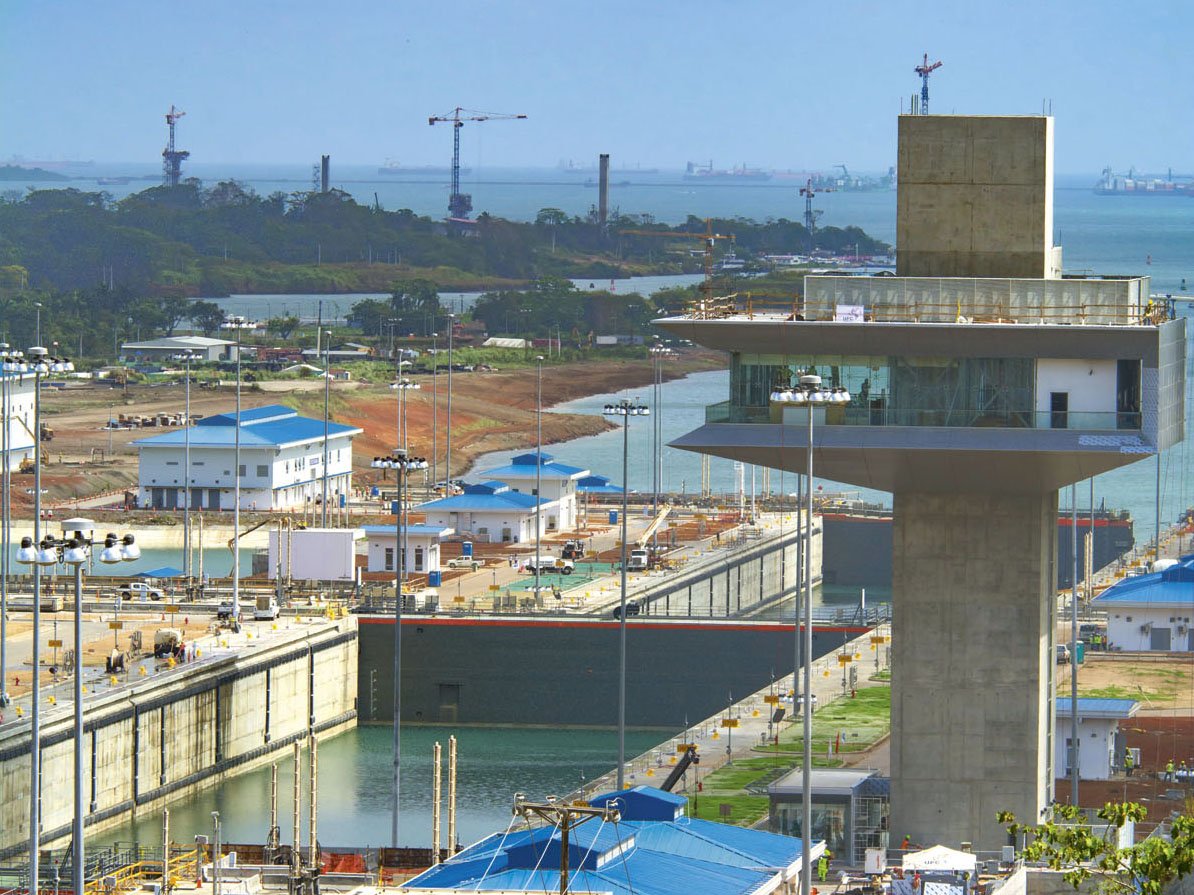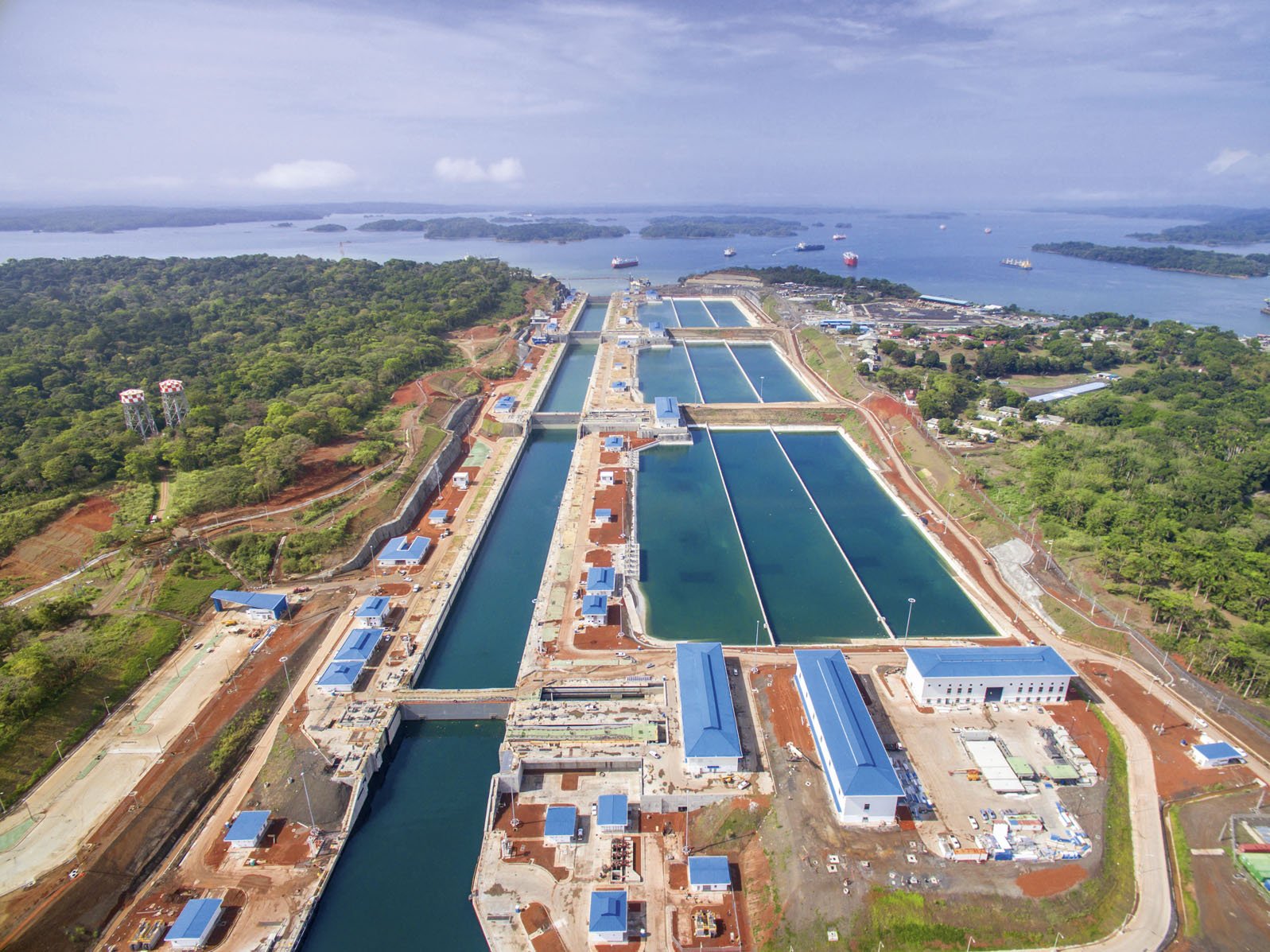

Panamá The Age of the Expanded Canal
By: Juan Abelardo Carles Rosas
Photos: Carlos Gómez y Javier Pinzón
The date has been set and the curtain is ready to rise: the Panama Canal will debut new locks (Cocolí and Agua Clara) on June 26, allowing passage of neopanamax cargo ships for the first time. Everything has come together for the grand opening after a series of misunderstandings between the Panama Canal Authority and the construction consortium, not to mention an unexpected limitation on boat draft (waterline to keel measurement) imposed by the worst El Niño since 1997, resulting in low flow from the watershed that supplies the interoceanic waterway.
Despite these difficulties, which are inconsequential in the final analysis, the expansion will bring fundamental changes to the global system of trade routes. Panorama of the Americas reviews some of the changes and trends prompted by expansion of the interoceanic canal.
United States: The Battle of the Coasts
The United States is the principal user of the Panama Canal. During the latter half of the 20th century, as our northern neighbor grew into the largest consumer market in the world, China became the main producer of consumer goods, and the Pacific Ocean supplanted the Atlantic as the Mare Nostrum of international trade, West Coast ports (Seattle-Tacoma, Oakland, and Los Angeles-Long Beach) gained ground on their East Coast counterparts (New York, New Jersey, Baltimore, Norfolk, Savannah, Charleston, and Miami, for example), investing in infrastructure that would accommodate postpanamax ships. The country’s eastern ports saw little profit in such investment as those ships could not cross through Panama to reach the East Coast. Economies of scale thus permitted West Coast ports to satisfy consumer demand in more than two thirds of the country at the expense of their East Coast competitors, whose penetration did not extend beyond the Mississippi.
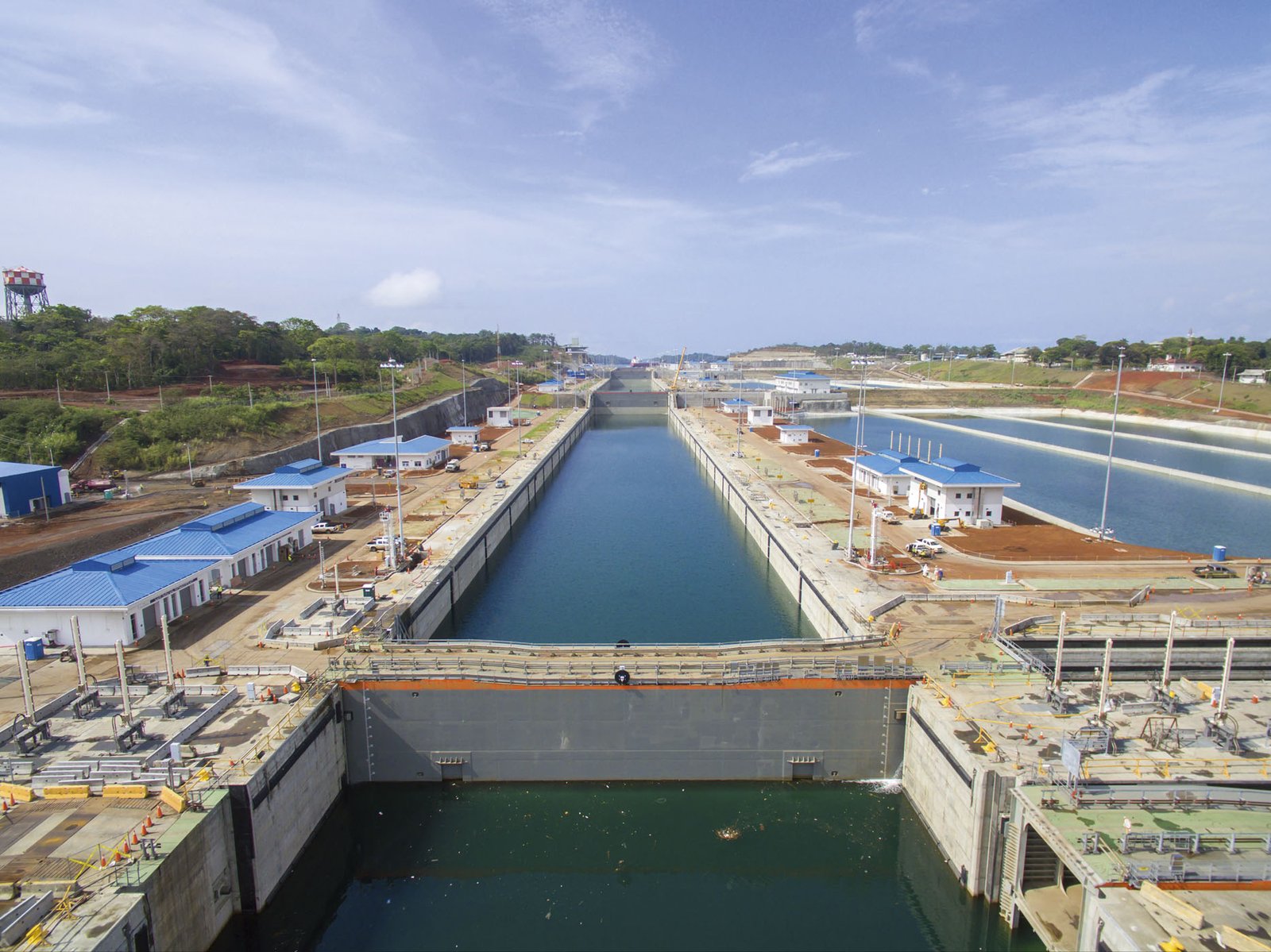
The Panama Canal expansion will offer an opportunity to redress the balance. East Coast ports, well aware of this, are racing against the clock to adapt their facilities to accommodate the new neo-postpanamax ships, which will begin passing through the Central American isthmus starting this month. Cities like Norfolk and Charleston are dredging their harbors to make them deeper and the roadway of the Bayonne Bridge ―which connects the ports of New York and New Jersey― is being raised to allow larger ships to pass underneath. There are good reasons for all of this preparation. According to consultant firms C.H. Robinson Worldwide and Boston Consulting Group, by 2020 these changes to the Panama Canal and US ports will shift 10% of the container cargo entering the United States from the West Coast to the East, where the ports will once again handle the import-export traffic of a territory that accounts for 15% of the gross national product, and which is home to major urban consumer hubs such as Chicago, Detroit, Columbus, and Memphis.
The Fukushima Effect and the New Green Route
Other ports that will see the benefits of trade from the East Coast are Houston and New Orleans on the Gulf of Mexico. Nevertheless, both coasts will profit from the emergence of a new business sector after the earthquake that devastated the northeastern rim of the Japanese archipelago in March 2011. The massive tsunami that followed the earthquake swept away not only houses, farms, and thousands of lives, but also the vital Fukushima nuclear plant, releasing contamination that will plague Japan and the rest of the world for decades, turning public opinion in Japan and many neighboring countries against nuclear power.
The increasingly loud public clamor to change the energy matrix has challenged governments to seek new energy sources. Production of gas from shale formations in the waters of the Gulf of Mexico has satisfied part of the demand. The last three years have also seen growth in top-off transfers of liquid petroleum gas (LPG) from larger vessels outside the Canal to those that can pass through the waterway and carry the gas to Japan. Once the expansion is complete, it will be easier to transport this product and top-off operations will be minimized, since the waterway will be able to take both LPG transport ships (with the capacity for more than 6 million cubic feet of gas) and VLGC-type tanker vessels. The Panama Canal Authority considers the waterway a “green route” since liquid gas —the least polluting of the fossil fuels— is transported through the Canal.
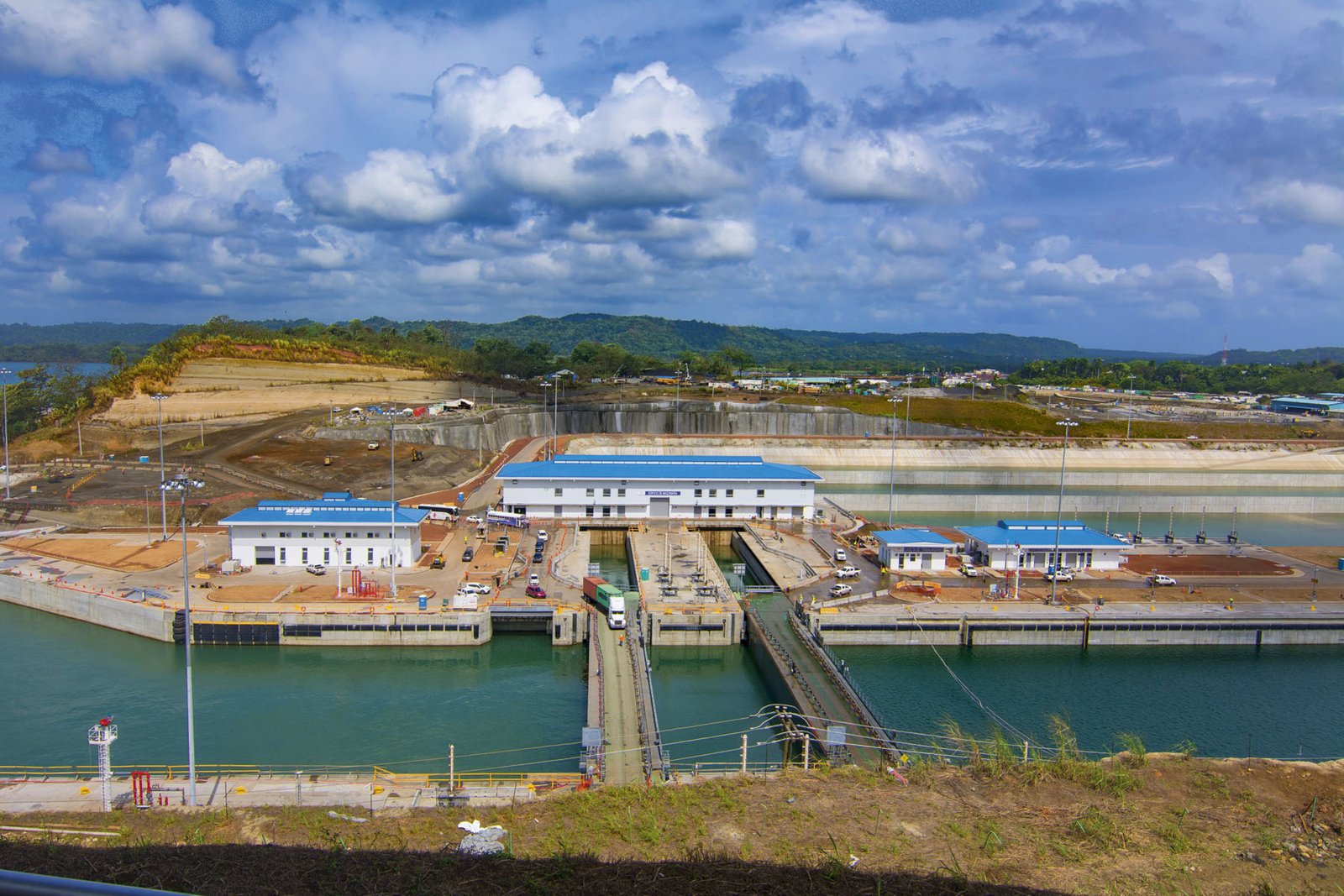

The Caribbean Gets In on the Action
US ports on the Gulf of Mexico are already benefiting from the LPG trade, and now ports in the central and southern Caribbean basin are also trying to get in on the action and take advantage of the economic opportunities presented by the expanded Panama route. Cartagena seems to have the advantage among Colombian ports, especially in the export of thermal coal from Colombia to the west coasts of México and Central and South America. The town dubbed “The Heroic City” has invested more than 800 million dollars to bring the port up to a standard capable of handling neopanamax vessels, thus expanding its competitiveness and the reach of its exports to the US West Coast.
Farther to the north, the island ports of the Caribbean are also muscling in. Caucedo (Dominican Republic) is investing 30 million dollars in deepening its harbor to 50 feet. The Dominican port hopes to take advantage of its nearness to the Las Américas International Airport and the Caucedo logistics park to increase its share of inter-American container cargo transport, redirecting cargo mainly from Argentina, Uruguay, and southern Brazil. Freeport (Bahamas) has dredged its port to a depth of 52 feet. Kingston (Jamaica) is still finalizing plans for updating its port, while the international shipping industry begins to consider what role Mariel (Cuba) will play as relations between the largest of the Antilles and the United States thaw, raising the island’s profile in world trade.
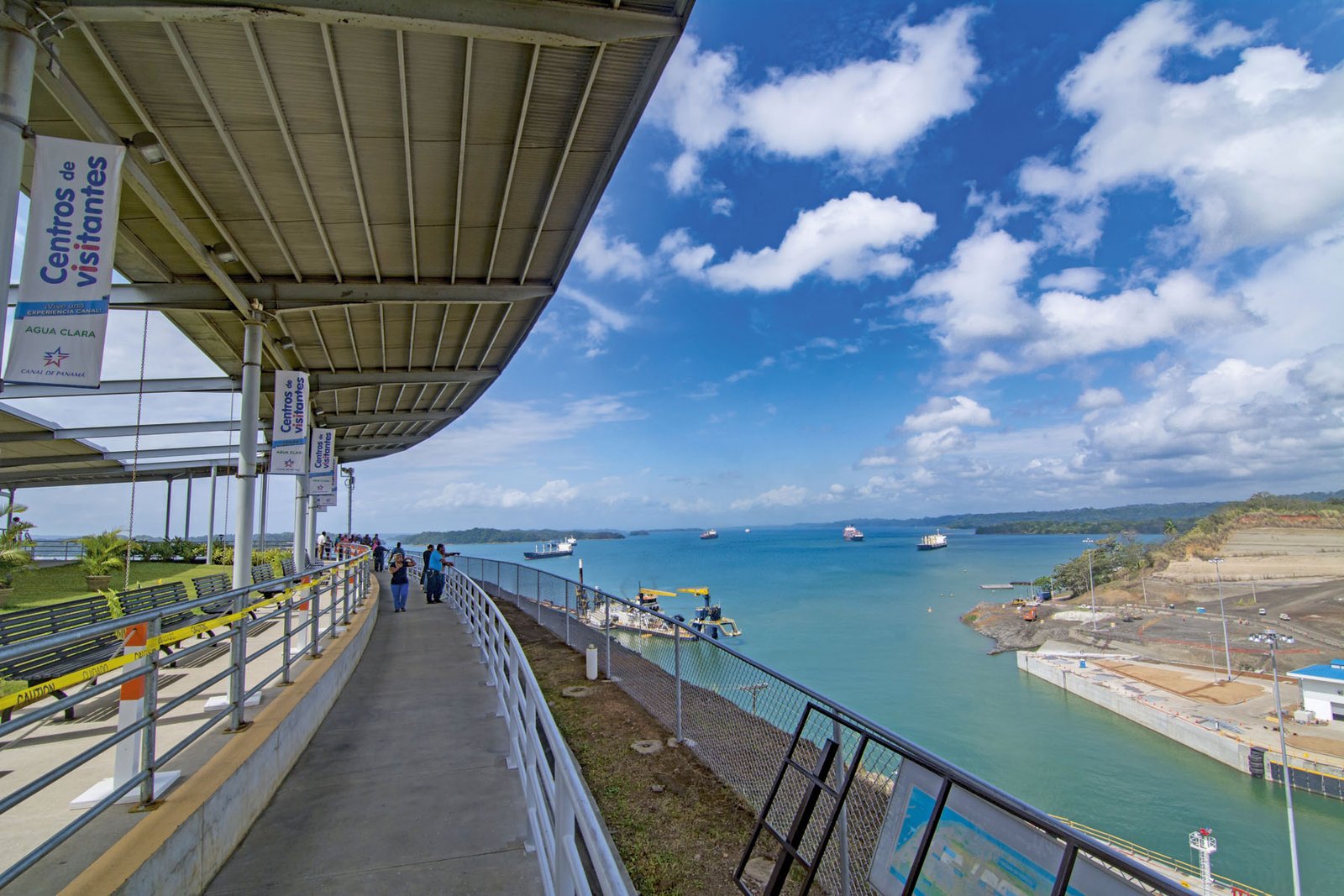

Ready on the Other Side
Caribbean ports are not the only ones scurrying to enlarge their share of the pie once the interoceanic route expansion is complete. Competition is equally fierce on the Pacific side. Callao (Perú) invested more than 700 million dollars in the city’s southern sector to prepare it for neopanamax ships. San Antonio (Chile) has not been left behind; it allocated 40 million dollars for dredging the port, as well as a further 400 million for building additional storage facilities. Ecuador is betting on the future port of Posorja, in which it is investing 530 million dollars to be used for dredging the port to a depth of 51 feet so it can accommodate panamax and postpanamax vessels. Buenaventura (Colombia) is rushing to complete its own to-do list, which includes dredging its canal to 44 feet, improving the wharves, purchasing postpanamax gantry cranes and RDT yard cranes, and other civil engineering works, all to the tune of some 80 million dollars.
A North Brazil Boom
Before the Chinese economy’s voracious appetite for South American raw materials dipped, Panama Canal administrators had noted a sustained increase between 2009 and 2014 in the tonnage of panamax ships carrying iron ore from northern Brazil’s Amapá region toward the Asian tiger. Similarly, since the southern part of the country is already fully cultivated, it is expected that new cultivation of soy and corn in the South American giant will shift toward the northeast, with exports departing the ports of Recife and Fortaleza and passing through the Central American isthmus when Chinese industry picks up steam again.
The Host Country Takes Its Share
It looks like the entire continent is preparing for the new trade conditions and routes created by expansion of the Panama Canal, but what about Panama? The country has spent the last thirty years developing related businesses in the transport of people and goods, and it has been very successful in converting the port circuit around the Canal into the largest and most successful in the region. As the Canal expands, so do these business opportunities. The Panama Canal Authority will finalize the details of the Corozal port concession at the waterway’s southern exit. Likewise, studies on developing parks for logistics and vehicle redistribution on the western shore are close to completion. The Panamanian government has identified nine business sectors, including tank purging, energy sale and redistribution (using the dense network of transmission lines in the Isthmus), oil pipeline, ship repair, and top-off operations. Finally, a fourth bridge over the Canal at the waterway’s northern exit will involve future logistics development to the northeast of the Canal region. The possibilities for Panama and the hemisphere mirror the myriad opportunities in consumer demand and trade.
